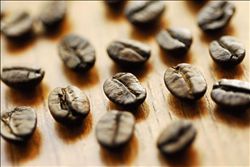The key to coffee blending is that the nature must be consistent.
The key to matching is that the nature must be continuous and consistent. All commercial blends aim for stability, and some of them are excellent, such as Finnish Paulig, Swedish Gevalia, Zeogas and AvidNorquis and Dutch DonweEgberts, which are unique premium coffee mixes.
For people who have just started drinking coffee, breakfast coffee is an ideal choice. This is a carefully roasted coffee, usually made of African coffee with milk, or a mixture of two moderately roasted Kenyan and Colombian coffees to start a refreshing and fragrant day. Mix coffee with the same ingredients after a meal, but roast them deeply to tap for more flavor. One of the best is Indonesian coffee, which is mixed with a little Kenyan and Costa Rican coffee to make the coffee more unique and elegant.
The coffee that is already rich and deeply roasted has an obvious bitter taste at first, but you'll soon get used to it. The strongest coffee is a deep-roasted continental blend, which is made into Italian concentrate and is popular throughout southern Italy for its unique bitterness, but almost no one cares about it elsewhere. The blended coffee in northern Italy has a light roasting degree, uniform texture and soft acidity, such as high-quality wine.
Nothing can stop you from creating your own match, but it doesn't advocate mixing two opposing beans, such as Ethiopia and Sumatra. When the two are mixed, the wine smell of Ethiopian beans makes the strong smell of Sumatran beans smell like dirt. But you can try mixing good Colombian and Sumatran beans, or try to find the best match between deep-baked and light-baked beans.
For some people who want coffee that tastes soft and not bitter, Arabica such as Columbia beans or Chagga in Tanzania can try, although Chagga has a slight acidity. For those coffee with strong flavor, it depends on how well it is roasted. Of course, for coffee, especially soft varieties like Brazil and Costa Rica, although you can roast them deep and taste strong, they can't be any more bitter. But if you add a little Robusta to it, you'll get a little astringent, a little bold. You can mix different flavors and characteristics in different combinations. Chagga-Java-Mocha is a good example, which includes the mellow taste of Java, the soft acidity of Chagga and the rich texture of Mocha.
The ideal way is to buy a small amount of raw beans, bake them yourself, and grind the beans directly before making coffee. However, most of us have to buy baked beans, and maybe this number will increase in the near future.
When storing beans, the biggest enemy is water. The volatile oils that give us aroma in the cup are soluble in water, and a humid environment can affect the oil. Do not store coffee in the refrigerator, because once the coffee is opened, the moisture will condense on the surface of the container.
If you want to store the coffee well at any time, the best way is to put it in the freezer and make sure it is encapsulated in a sealed bag. Baked beans can be stored in the freezer for more than a week. When you need them, don't try to thaw the beans, just put them in the grinder.
Another big enemy of coffee is oxygen, which breaks down volatile aromatic oils. This is the importance of grinding beans directly before making coffee. After the coffee is ground, its surface is exposed to the air, which means that the aromatic oil begins to volatilize and the flavor disappears in the air.
Don't store coffee next to products with strong flavors, such as tea. Coffee will quickly absorb the taste of other substances.
If you buy coffee by mail, it is best to buy only a small amount at a time. Although the quantity is good, you will lose the value of these coffees, just as you lose their aroma.

Important Notice :
前街咖啡 FrontStreet Coffee has moved to new addredd:
FrontStreet Coffee Address: 315,Donghua East Road,GuangZhou
Tel:020 38364473
- Prev

Can I mix a few kinds of coffee together? mixed coffee mixed coffee
How do you match it? Blending coffee is not a random mix of coffee beans. Sometimes the blending of two kinds of boutique coffee will suppress each other's unique flavor; the blending is not just a combination of several boutique coffees together, it is like a painter adjusting and creating charming colors in the color palette. There is a misunderstanding, is to ask this secret recipe, in fact, there is no secret recipe.
- Next

Is coffee blending required to use coffee beans with their own characteristics?
1. Blending of raw beans requires the use of coffee beans with their own characteristics, and avoid using coffee beans with similar flavor. The selection of raw beans can be considered from three aspects: the treatment method of raw beans, that is, whether raw beans are treated by washing or drying, which has a lot to do with the flavor of coffee beans. Raw bean producing area: coffee producing area is generally divided into three major regions, including Central and South America, namely Pakistan.
Related
- Does Rose Summer choose Blue, Green or Red? Detailed explanation of Rose Summer Coffee plots and Classification in Panamanian Jade Manor
- What is the difference between the origin, producing area, processing plant, cooperative and manor of coffee beans?
- How fine does the espresso powder fit? how to grind the espresso?
- Sca coffee roasting degree color card coffee roasting degree 8 roasting color values what do you mean?
- The practice of lattes: how to make lattes at home
- Introduction to Indonesian Fine Coffee beans-- Java Coffee producing area of Indonesian Arabica Coffee
- How much will the flavor of light and medium roasted rose summer be expressed? What baking level is rose summer suitable for?
- Introduction to the characteristics of washing, sun-drying or wet-planing coffee commonly used in Mantenin, Indonesia
- Price characteristics of Arabica Coffee Bean Starbucks introduction to Manning Coffee Bean Taste producing area Variety Manor
- What is the authentic Yega flavor? What are the flavor characteristics of the really excellent Yejasuffi coffee beans?

